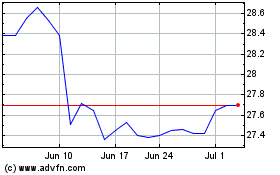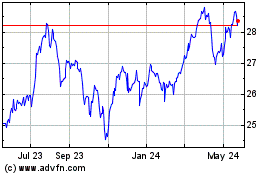iShares, the San Francisco-based ETF giant, is looking to expand
its lead in the foreign fund space with the launch of its newest
ETF, the MSCI Frontier 100 Index Fund (FM). The
company already dominates the country-specific ETF world thanks to
having some of the first—and so far only—funds to track stock
markets in a variety of often overlooked nations around the world,
and is undoubtedly hoping to maintain its lead in the regional ETF
market as well.
This is important as the company is seeing huge levels of
competition in the regional ETF space, and for good reason as these
segments tend to be, on average, more popular than individual
country ETFs due to their more diversified exposure. Furthermore,
until the launch of FM, this was one of the few areas of the
international ETF world in which iShares didn’t have a fund,
suggesting that this was long overdue for the world’s biggest ETF
issuer.
Frontier Markets in Focus
The MSCI Frontier 100 Index Fund (FM) will give investors
exposure to a basket of ‘frontier’ markets from around the globe.
However, the term ‘frontier’ market doesn’t nearly get the level of
play in media circles that terms like ‘emerging market’ do, so some
investors may be wondering what the key differences are between the
two types of developing economies (see Three Overlooked Emerging
Market ETFs).
Basically, frontier markets are generally considered by
investors to be one step below emerging markets and thus even more
risky. However, this also means that they have incredible growth
potential as well, making them interesting compliments for
portfolios seeking more international exposure.
Generally speaking, this means that frontier nations do not have
market capitalization or liquidity levels that are anywhere
approaching emerging market countries, let alone developed ones
like the U.S. or Japan. Additionally, due to these lower liquidity
levels, stocks and funds in this space tend to have lower
correlation levels than emerging and developed nation equities,
meaning that they could be a decent source of uncorrelated returns
in an increasingly integrated world (see Frontier Market ETF
Investing 101).
Countries that are often included in this classification include
a number of rich but closed-off markets in the Middle East such as
Jordan or Kuwait, countries that have a great deal of investor
restrictions despite having sizable GDPs such as Argentina, and
Asian markets like Sri Lanka and Bangladesh which have tiny markets
and pretty undeveloped economies.
As you can see from this smattering of countries above, frontier
markets actually include a pretty diverse mix of economies. It is
also a good idea to point out that a nation’s GDP per capita—which
is often used to help distinguish an emerging market from a
developed nation—is pretty much irrelevant when it comes to
frontier markets, as some of the richest and the poorest nations
find their way into frontier market indexes.
With this approach and by using an MSCI-based benchmark, FM ends
up with a portfolio of roughly 100 stocks from about 20 different
nations. The product will charge 79 basis points a year in fees,
meaning that it will be a relatively expensive choice when compared
to the other names already in the frontier market world (read Three
Emerging Market ETFs to Limit BRIC Exposure).
From an exposure perspective, financials dominate the index,
accounting for a whopping 57% of the total. Rounding out the top
three are telecoms (15.8%) and energy (9.1%), suggesting that the
portfolio will be heavily concentrated in a few choice sectors.
From a national viewpoint, the Gulf States dominate, as Kuwait
(30%), Qatar (15.8%), and the UAE (11.9%) take the top three spots.
Beyond these three, Nigeria gets a double digit allocation while
the rest of the top seven is rounded out by Pakistan, Kazakhstan,
and Argentina.
ETF Competition
Currently, there are two other ETFs in the frontier market
universe, the Frontier Markets ETF (FRN) from
Guggenheim, and the MENA Frontier Countries Portfolio
(PMNA) from PowerShares. These two aren’t the most popular
funds, but they do combine to hold just over $165 million in
assets.
When looking at country and sector exposures, these couldn’t be
more different than the new FM fund from iShares. FRN puts a heavy
focus on Latin American securities, while PMNA only holds
securities in the Middle East and North Africa, meaning that it
forgoes exposure to popular frontier nations like Argentina,
Nigeria, and Kazakhstan (see Forget Argentina, Buy These Latin
America ETFs Instead).
With that being said, investors should note that financials are
an important part of all three funds and that there seems to be no
real escaping the banking exposure, although FRN admittedly does
the best job. It should also be pointed out that from an expense
perspective, FM is pretty weak, costing more than either one of the
already available products on the market.
Still despite this expense ratio difference and the heavy focus
on financials, FM could be an interesting choice for some investors
who want more frontier market assets. After all, it still provides
a relatively well diversified portfolio across regions and it has,
arguably, less of a focus on a particular part of the globe than
either FRN or PMNA (see Time to Get Regional with Bond ETFs).
This could be especially important when comparing FRN to FM, as
FRN includes assets from countries like Colombia and Chile, two
nations which many don’t really regard as ‘frontier’ anymore. Given
this, some investors who are willing to pay a little more in
expenses might want to give the new iShares fund a closer look,
especially if you are looking for relatively uncorrelated assets in
markets that do not usually find their way into your portfolio.
Want the latest recommendations from Zacks Investment Research?
Today, you can download 7 Best Stocks for the Next 30
Days. Click to get this free report >>
Follow @Eric Dutram on Twitter
(FM): ETF Research Reports
GUGG-FRONTR MKT (FRN): ETF Research Reports
PWRSH-MENA FRON (PMNA): ETF Research Reports
To read this article on Zacks.com click here.
Zacks Investment Research
Want the latest recommendations from Zacks Investment Research?
Today, you can download 7 Best Stocks for the Next 30 Days. Click
to get this free report
iShares Frontier and Sel... (AMEX:FM)
Historical Stock Chart
From Jan 2025 to Feb 2025

iShares Frontier and Sel... (AMEX:FM)
Historical Stock Chart
From Feb 2024 to Feb 2025
